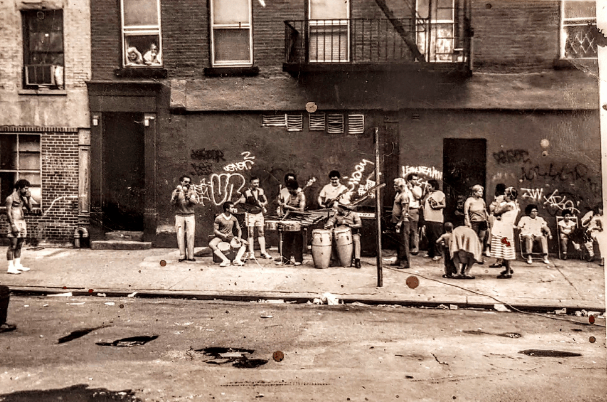
When one thinks of artists coming of age or discovering themselves, it may be easy to imagine a privileged person deciding to start being an artist to look for some deeper meaning in their lives. It may be easy to imagine that these artists live in affluent neighborhoods where people consume forms of art leisurely and would encourage budding artists to practice their craft. This “exclusive” opportunity for the wealthy to become and survive as artists is mostly true during our time and unfortunately, society forces many people to turn away from their artistic natures in order to survive.
However, an artistic explosion of different forms of expression defined the era that Patti Smith lived in and it was not confined to the privileged of the city. Patti Smith described her artistic nature as a “calling” and doing God’s Work, something that she did not choose to do one day randomly, but something that she had to do. Although Patti Smith was white, so may not have experienced the same struggles as minorities, she often describes times “pretending not to be hungry” with Robert, all the while still embracing her artistic nature. She also had her fair share of hardship when she spent a while in New York City without a place to live, until Robert took her in. Even when she found a job, she still struggled to pay for food.
Despite all of this however, struggling artists defined Patti’s era and persisted despite the hardships. This picture by Martin Wong, of an unnamed street in New York City, describes this sentiment well. The focus of the image is the band that has set up on the sidewalk and is playing for the rather small crowd on the street. The neighborhood does not look to be very affluent because of the graffiti on the wall and the dirty streets. I think this image encapsulates the era of artistic creation during the 60-70s because it shows how artistic expression was accessible to all social classes and to all races. These musicians might make better money at another job, but they play for the small neighborhood audience anyway. The “callings” to art and its creation were so strong that people like these musicians played despite everything, just as Patti Smith did.
The audience listening in seems to be people who happen to live around the area and are just enjoying their day relaxing outside. This shows that artists did not need a grand stage or a big audience, but created art, simply to create and because they could. We can see a couple that opened up their window and peeked out and grandmothers taking care of their children. These people all formed their day around listening to this band play and were content. This leisurely acceptance and consumption of art, in this case music, shows how the culture in New York City at the time was to enjoy art in all forms, and at all times. We can also see that the audience, as well as the musicians themselves, consists of people of different skin colors and presumably different races. We also see people of different ages in the audience. This is the aspect of the photo that I find most striking, the fact that people of all races, colors, and ages socialized in the presence of the music and encouraged the artists. In this decade, some parts of the U.S. still enforced Jim Crow laws, yet here was a gathering of people who came together despite the atmosphere of racism that probably existed even in New York City. A culture that reinforces artistic exploration and does not limit it based on race or social class is a culture where minorities are a step closer to be being treated as equals. If the city simply tolerated minorities and just allowed them to work or vote, but rejected their ideas and expressions, it would be a sign that it did not truly accept them. This picture shows the beginning of a city that can begin to integrate its historically oppressed citizens into its culture.
Though this is just one picture of only one moment in Patti Smith’s era, it can show us the changing zeitgeist of New York City and the acceptance of artists growing as people from all walks all of life. Examining the experiences of all citizens, not just the famous and accomplished, is important to understanding the nature of a culture. Though the unnamed artists in this photo may never become famous as Patti Smith is, examining and interpreting this snapshot of their lives serves to broaden our understanding of Patti Smith’s era. If even the underprivileged were encouraged to express themselves, we can say with some more certainty that the 60s-70s encouraged the growth of artists.
- by Samir Ali